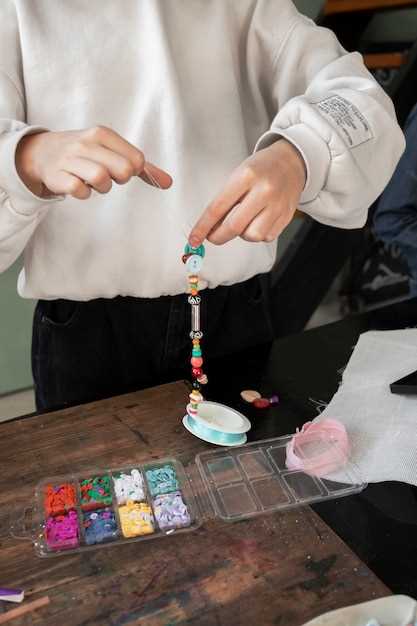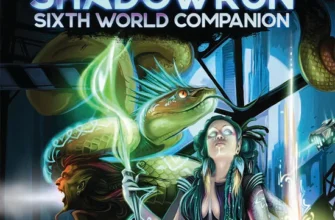In a world brimming with digital distractions, wooden pieces and colorful boards beckon innovators. Exploring realms of creativity, inventors breathe life into captivating pastimes, rekindling human connection. Fueled by nostalgia and passion, novel adventures unfold on every table. Players eagerly dive into intricate mechanics and storylines. Communities thrive, bonded by shared strategies and laughter. However, behind each successful design, lies an art that blends vision, strategy, and emotion.
Creating these tactile wonders demands a mix of inspiration and meticulous planning. Designers embark on a journey to captivate and challenge minds. They sculpt experiences, considering every rule, every piece. Hours of brainstorming lead to concepts that both intrigue and entertain. It requires balancing simplicity with depth, ensuring universal appeal without stifling richness. From initial sketch to final product, each step demands precision and imagination.
Feedback is vital in this intricate process. Iteration is key. Creators rely on testing phases to refine their vision. Players’ reactions shape the narrative, guiding adjustments and enhancements. Successful inventors embrace this dynamic interplay, welcoming insights and critiques. This collaboration not only hones mechanics but enriches the journey, allowing participants to feel immersed and engaged. Thus, from sketches to dice rolls, the seamless blend of art and strategy unfolds, inviting everyone into a world of endless possibilities.
- The Art of Board Game Design
- Understanding Game Mechanics
- Core Elements of Interactive Play
- Balancing Complexity and Engagement
- Creating a Unique Theme
- Incorporating Stories and Settings
- Identifying Target Audience Preferences
- Prototyping and Playtesting
- Developing Initial Models
- Video:
- The ULTIMATE Board Game STRATEGY GUIDE
- FAQ:
- What are the first steps to take when developing a board game from scratch?
- How important is playtesting in the board game development process?
- Can you explain the role of theme in a board game and how it affects player engagement?
- What are some common mistakes to avoid when designing a board game?
- How do you determine the right price point for a newly developed board game?
The Art of Board Game Design
Creating a tabletop experience is a unique form of storytelling. It’s an intricate dance of imagination, strategy, and challenge. Designers are architects of playfulness, sculpting worlds from ideas. They bring abstract concepts to life with rules and pieces. Each game offers new adventures, unfolding in the minds of players. Like performing magic with cardboard and plastic, crafting these experiences involves a careful blend of elements that engage and inspire both novice and seasoned players alike.
Good design captivates and challenges. It keeps players coming back. A compelling theme is core. It immerses players in a new realm. An engaging concept stimulates the imagination, setting the stage for epic adventures. Let’s explore what makes these games tick:
- Engagement:Stimulate interest with interactive mechanics.
- Complexity:Balance complexity; too intricate risks confusion, simplicity risks boredom.
- Aesthetics:Visuals matter. They attract and enhance thematic elements.
- Replayability:Encourage repeated sessions; varying outcomes add value.
- Balance:Fairness ensures enjoyment. No player should feel disadvantaged.
Interaction among players forms the backbone of meaningful experiences. Encourage collaboration, competition, or alliances. Create opportunities for unexpected twists. These moments foster memories that linger long after the session ends. Remember, each decision shapes a player’s journey. Elements like storytelling, strategic depth, and aesthetic appeal must work in harmony to create something unforgettable.
In-depth playtesting is vital. It identifies strengths and uncovers weaknesses. Feedback refines the design, guiding improvements. Adaptability during this phase often determines success. Embrace iteration as a part of the creative process, for it breathes life into concepts. Ultimately, designing a great game means designing an experience that resonates with people, creating joy and challenge in equal measure.
Understanding Game Mechanics
Game mechanics shape the experience. It’s what players interact with. Simple actions turn into complex strategies. Sensational themes and vivid graphics captivate at first glance. Yet, it’s the mechanics that keep players coming back. Imagine your favorite pastime without its core principles. Would it still be as engaging or rewarding? Undoubtedly, understanding these elements becomes vital for crafting a compelling experience. By grasping these concepts, creators can elevate their designs to new heights, capturing the interest and imagination of their audience seamlessly.
-
Core Mechanisms:They form the backbone of every experience. Concepts like resource management, territory control, or pattern recognition. These elements dictate how participants engage, challenge, and compete. Each choice adds depth, creating a unique blend of interaction and strategy.
-
Balancing Elements:Vital for an enjoyable session. A harmonious design ensures fair play. Too much complexity frustrates; too little, and players lose interest rapidly. Striking the perfect balance can be intricate but hugely rewarding.
-
Feedback Loops:Systems that continually reward or penalize actions. Positive loops propel participants forward, allowing growth or advancement. Negative loops introduce setbacks, prompting reassessment or strategic pivots. Both are essential for maintaining engagement.
Players seek a journey, not just a quick thrill. Mechanics provide this immersive progression. As creators refine their understanding, their designs flourish more vibrantly and resonate deeper. Achieving mastery in these aspects fosters more memorable and impactful sessions. Truly, it’s the heart of a remarkable experience.
Core Elements of Interactive Play

Interactive play forms the heart of any engaging tabletop experience. It is about creating connections between participants through meaningful choices. Each decision players make can influence the game’s path. Skilled design brings people together, sparking competition or collaboration. This dynamic draws players in and keeps them engaged.
First, consider the significance of player interaction. This aspect dictates the flow and pace of many recreational experiences. A game without solid interaction often feels static or unsatisfying. Remember, it’s not just about turns and movements. The true magic lies in the interpersonal dynamics. How players communicate, negotiate, and strategize can shape the entire session. Building an environment where interaction thrives adds layers of depth to your creation.
Another core element involves crafting engaging challenges. Challenges drive engagement and provide purpose. Thought-provoking puzzles can stimulate interest. On the other hand, overly complex designs may deter casual players. Strive for a balance that caters to diverse audiences. Balancing these challenges with potential outcomes enhances player agency and investment. It encourages experimentation and exploration, keeping participants captivated as the session unfolds.
Consider also the importance of theme integration. A compelling theme not only enhances the visual appeal but also enriches the interactive narrative. It frames the player’s journey and sets the tone. Effective theme integration provides context and can heavily influence player decisions and behaviors. A well-integrated theme heightens immersion, bridging the gap between reality and the imaginative world of the game.
Lastly, ensure clear feedback mechanisms. Feedback keeps players informed and engaged. Without it, participants might feel lost or unsure of their progress. Immediate responses to actions taken by the players create a more immersive experience. Whether through visual cues or in-game prompts, feedback ensures players understand the impact of their decisions. In doing so, it helps maintain momentum and encourages continued participation.
Balancing Complexity and Engagement

Achieving harmony between intricacy and player involvement is crucial in crafting a captivating experience. Adding too many rules can overwhelm participants. Simplicity may result in boredom. There’s no one-size-fits-all formula. Each creation is unique and demands careful consideration. A meticulous equilibrium can elevate the enjoyment for everyone involved. It’s like walking a tightrope, needing skill and focus to keep from falling into either chaos or monotony.
Understand Your Audienceis the first step. Younger players often lean towards easier experiences. Experienced enthusiasts may crave deeper exploration. Knowing participants’ expectations guides decisions about complexity levels. Tailoring difficulty to your target group ensures that participants stay interested without feeling lost or unchallenged. Consideration of prior feedback and observation plays a vital role here, too.
Imagine creating layers of depth. Start with core mechanics. They should be simple yet engaging. Then, add complexity gradually. Introduce new elements as players get comfortable. This method allows for more profound strategies without initial confusion. An evolving experience keeps players invested over time. It encourages learning and adaptation. Individuals feel rewarded as they master new challenges, enhancing their sense of accomplishment and maintaining long-term interest in the game.
Testing and Iterationcannot be overlooked in this process. Gather a variety of perspectives. Diverse groups can provide invaluable insights into what’s working. Engage with novices and veterans alike for comprehensive feedback. Use this input to refine rules. Streamline where necessary. Complicated sections might need reworking or clarifying. Don’t be afraid to discard elements that don’t add value. Iteration helps prune excess while nurturing quality aspects that spark joy and engagement.
Balancing intricacy and engagement isn’t a science but an art. Creator intuition plays a big role. Staying flexible and open-minded during development fosters innovation. Always be willing to adapt. Let go of preconceived notions. Create an environment that respects both new and seasoned players. Success lies in marrying challenge with enjoyment, resulting in a memorable adventure that players will return to time and again.
Creating a Unique Theme
Crafting an exclusive theme is crucial to make your tabletop creation stand out. It gives your project identity and flavor. Players are drawn in by compelling stories and settings. At the heart of every successful tabletop experience is a theme that speaks to its audience. To find that spark, mix creativity with originality.
Start by brainstorming ideas that interest you. They could be drawn from history, fiction, or your imagination. Sometimes, blending two unexpected concepts can lead to something fascinating. Think about a steampunk world with ancient magic, or a dystopian future where nature has reclaimed much of the earth. When piecing this together, consider the emotions you want your participants to feel. Ensure there’s enough depth for them to explore, getting them invested in the environment and its tale.
Once you have a general concept, research similar ideas. See what’s already been explored to avoid repetition. It’s also a chance to identify gaps you can fill with your invention. Be open to evolving your initial thoughts as new inspirations strike.
Next, focus on how mechanics will align with the theme you’ve selected. Mechanics enhance the narrative and make the experience more immersive. Your story and rules should complement each other, with each part of the play unfolding naturally within your world. If your theme involves exploration, incorporate discovery and surprises into your mechanics.
Throughout this journey, keep a notebook handy. Jot down any new thoughts. Inspiration can hit at any moment, even outside planning sessions. Encourage feedback from trusted peers to refine your theme further. Their perspectives can unveil new angles you might have missed.
Embrace originality. A fresh theme, well-executed, leaves a lasting impression long after the session ends. Craft something that is distinctively yours. Dive into every layer of your chosen world, and let imagination guide you to create something memorable and utterly unique.
Incorporating Stories and Settings

Creating a captivating story and an immersive setting is crucial. They offer context and breathe life into the experience. Players are drawn into another world. Characters and plots engage their imaginations. People love to explore, discover, and unravel mysteries within a game. By weaving narratives into your creation, you provide depth and motivation, making each session an epic journey rather than a simple pastime.
A well-crafted story adds layers to the experience. Think about popular novels and movies. These often provide inspiration for your theme and setting. Your narrative sets the stage for challenges and adventures. Decide on the genre and mood. Are players exploring a mystical kingdom, or solving a mystery in a futuristic city? This decision affects every aspect of design, from pieces and visuals to rules and mechanics.
Consider how the setting influences gameplay. Unique environments offer specific challenges. A desert may demand resource management. A haunted castle could focus on cooperative survival. Use vivid descriptions and scenarios. Enhance the atmosphere with artwork and components. Make sure each element resonates with the story. This cohesion creates a memorable world your players want to return to.
| Elements | Impact |
|---|---|
| Storyline | Engages players, provides motivation |
| Setting | Influences mechanics, enriches experience |
| Characters | Offer relatability, drive plot development |
| Challenges | Add excitement, test strategies |
Never underestimate the power of creativity. Players crave the opportunity to immerse in fantastic tales. Think outside the box. Dare to be different. Introduce unexpected plot twists. Keep them guessing and eager for more. Whatever direction you choose, make sure your narrative shines, captivating minds and hearts alike. Creating worlds within games is both an art and a science, demanding a delicate balance of imagination, coherence, and engagement.
Identifying Target Audience Preferences
Understanding preferences of your target audience is crucial for crafting an engaging tabletop experience. Each group has unique expectations. Some love strategic challenges, others crave social interactions. Children might seek simplicity, while adults might enjoy complexity. Recognizing these varied preferences allows you to tailor your concept effectively.
Dive deeper with key questions. What age group are you targeting? Their interests? Do they play for fun or competition? Answering these not only shapes design but also ensures that the game feels rewarding. Investigate their existing favorites. Analyze what draws them in, what keeps them engaged.
- Gather feedback through surveys or focus groups.
- Observe behavior during playtests.
- Study trends and popular themes in current offerings.
Consider diversity in player motivations. Some enjoy storytelling, others enjoy problem-solving. Think about group dynamics. Solo experiences differ from group interactions. Evaluate how complexities like rules, duration, and setup influence enjoyment. Balancing depth and accessibility is key. A beginner-friendly yet rich experience attracts a wider audience.
- Research audience demographics and psychographics.
- Explore specialized forums and online communities.
- Analyze feedback on similar experiences.
- Identify cultural and regional influences.
Once you have mapped preferences, align them with your vision. Successful experiences resonate because they speak directly to player desires. Keep adapting as trends evolve and new insights emerge. Ultimately, a tailored experience connects with the hearts and minds of its players.
Prototyping and Playtesting
Creating a rough version of your concept allows you to experiment. Experimentation brings clarity. Early sketches and drafts transform vague ideas into tangible experiences. Seeing your concepts in real life can spark new insights. Frequent testing with others is essential for improvement. It provides feedback you can’t predict alone. Iterating on this feedback is where true refinement happens. Testing repeatedly with varied groups enhances your understanding of the mechanics and balance.
Constructing initial versions:The first step is to transform your ideas into a physical form. Use basic materials like paper, cardboard, and tokens. Keep it simple to start. Complexity can grow later. Initial simplicity lets you focus on core mechanics. It’s about nailing the essence first. You might find that what works in your head doesn’t translate perfectly to a tactile experience. Constructing allows tangible interactions, often revealing strengths and weaknesses previously hidden.
Inviting others to experience:Once a basic model is ready, involve people outside your immediate circle. A diverse group provides fresh perspectives. Different backgrounds offer unique insights. Family, friends, or online communities serve as valuable resources. They’re generally willing to help. This doesn’t mean any feedback should be taken verbatim. Analyze every comment with your vision in mind. Not every opinion fits your ultimate goal. However, patterns in feedback can highlight fundamental issues or hidden potential. This leads to insights you wouldn’t find in isolation.
Iterative cycles of testing and refining are crucial. Each test reveals more. Each revision brings your vision closer to reality. Feedback loops should be concise and efficient. Adjust, test, and repeat until the experience is cohesive. Such cycles ensure the final product reflects your original dream, now sharpened through consistent iteration. By approaching this phase with curiosity and openness, you allow your creation to evolve into something truly remarkable.
Developing Initial Models
Creating the first drafts of any tabletop experience can be both thrilling and overwhelming. Ideas spark from different sources. Inspiration can come from anywhere. You could be influenced by a story, an image, or even a simple mechanic. At this stage, anything is possible. Experimentation is key, and it’s vital to remain open-minded as concepts evolve. The early sketches may seem rudimentary; however, these initial attempts lay the groundwork for future iterations. They’re the spark that ignites deeper creative processes, gradually transforming abstract notions into a tangible reality with each refinement and adjustment.
Start with a simple framework. Think about the core essence, the main themes. What’s the emotion you want your players to feel? Consider drafting some basic rules. What actions will players take? Movement, attacking, trading, or solving puzzles? Jot down these fundamental interactions. They’ll guide your design. A basic prototype can be mocked up using everyday items. Think cards, tokens, dice–you don’t need specialized tools at this stage. The focus should be on bringing the concept to life to see how it functions in practice.
Feedback is paramount. Gather a small group of trusted individuals. They should understand your vision but also bring fresh perspectives. Set the stage for constructive criticism. Encourage them to be honest and detailed. These early tests will help identify strengths and weaknesses. Adjust the model based on this input. Be flexible and willing to adapt. Over time, through trial and error, the messy drafts will transform. They’ll offer a clearer direction, eventually blossoming into an engaging final product players can’t wait to explore.
Video:
The ULTIMATE Board Game STRATEGY GUIDE
The ULTIMATE Board Game STRATEGY GUIDE by Legendary Tactics 2,279 views 1 year ago 2 minutes, 35 seconds
FAQ:
What are the first steps to take when developing a board game from scratch?
The initial steps in developing a board game include brainstorming ideas and concepts, defining the target audience, and establishing the core mechanics and rules. It’s essential to start with a clear vision of what kind of gaming experience you want to provide. Create a rough prototype using simple materials to test your ideas, make adjustments, and refine your concept based on playtesting feedback. The early stages are crucial for setting the foundation upon which the rest of your development process will build.
How important is playtesting in the board game development process?
Playtesting is a critical component of board game development. It allows you to evaluate if your game mechanics work as intended, gauge player enjoyment, and identify any balance issues or areas of confusion within the rules. Through frequent playtesting sessions, you gather valuable feedback that can lead to significant improvements in gameplay and overall player experience. It’s not just about finding flaws but also about discovering new opportunities to enhance your game.
Can you explain the role of theme in a board game and how it affects player engagement?
The theme of a board game provides context and narrative, which can greatly enhance player engagement. A well-integrated theme can make the game more immersive and relatable, drawing players into its world and making the experience more memorable. For example, a board game set in a fantasy world with vivid characters and events can spark players’ imaginations, providing motivation beyond simply winning. A cohesive theme can also guide the design of game mechanics and components, ensuring they support the story rather than detract from it.
What are some common mistakes to avoid when designing a board game?
Common mistakes in board game design include overly complicated rules, lack of balance, and poor theme integration. A complex rule set can be daunting for new players and deter them from giving the game a chance. It’s crucial to strike a balance with mechanics to ensure no strategies or players have an undue advantage, maintaining fair and enjoyable gameplay. Additionally, if the theme does not resonate with the mechanics or if it’s overlooked, the game can feel disjointed and fail to captivate players.
How do you determine the right price point for a newly developed board game?
Determining the right price point involves assessing production costs, the perceived value of the game, and market conditions. Calculate the expenses involved, including manufacturing, shipping, and potential marketing costs. Consider the game’s components and their quality, which contribute to its perceived value by players. Researching competitor prices can provide insight into what the market can bear. Finally, consider your target audience’s willingness to pay and the value they expect, ensuring your pricing aligns with their expectations without compromising your financial goals.


